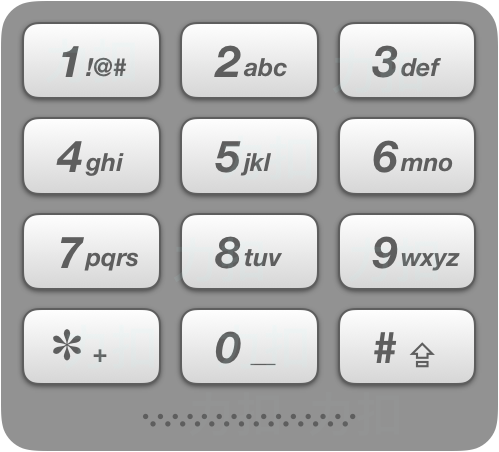英文原文
On old cell phones, users typed on a numeric keypad and the phone would provide a list of words that matched these numbers. Each digit mapped to a set of 0 - 4 letters. Implement an algorithm to return a list of matching words, given a sequence of digits. You are provided a list of valid words. The mapping is shown in the diagram below:

Example 1:
Input: num = "8733", words = ["tree", "used"] Output: ["tree", "used"]
Example 2:
Input: num = "2", words = ["a", "b", "c", "d"] Output: ["a", "b", "c"]
Note:
num.length <= 1000words.length <= 500words[i].length == num.lengthThere are no number 0 and 1 in num.
中文题目
在老式手机上,用户通过数字键盘输入,手机将提供与这些数字相匹配的单词列表。每个数字映射到0至4个字母。给定一个数字序列,实现一个算法来返回匹配单词的列表。你会得到一张含有有效单词的列表。映射如下图所示:

示例 1:
输入: num = "8733", words = ["tree", "used"] 输出: ["tree", "used"]
示例 2:
输入: num = "2", words = ["a", "b", "c", "d"] 输出: ["a", "b", "c"]
提示:
num.length <= 1000words.length <= 500words[i].length == num.lengthnum中不会出现 0, 1 这两个数字
通过代码
高赞题解
解题思路
列表生成器形式的剪枝,缩小搜索空间
代码
class Solution:
def getValidT9Words(self, num: str, words: List[str]) -> List[str]:
kb = {'2':'abc', '3':'def', '4':'ghi', '5':'jkl', '6':'mno', '7':'pqrs', '8':'tuv', '9':'wxyz'}
ns = list(num)
candidate = words
for i, n in enumerate(ns):
candidate = [w for w in candidate if w[i] in kb[n]]
return candidate
统计信息
| 通过次数 | 提交次数 | AC比率 |
|---|---|---|
| 9399 | 12990 | 72.4% |
提交历史
| 提交时间 | 提交结果 | 执行时间 | 内存消耗 | 语言 |
|---|




